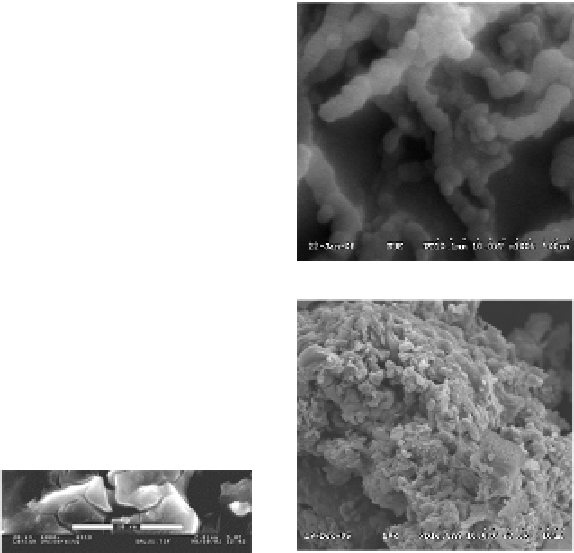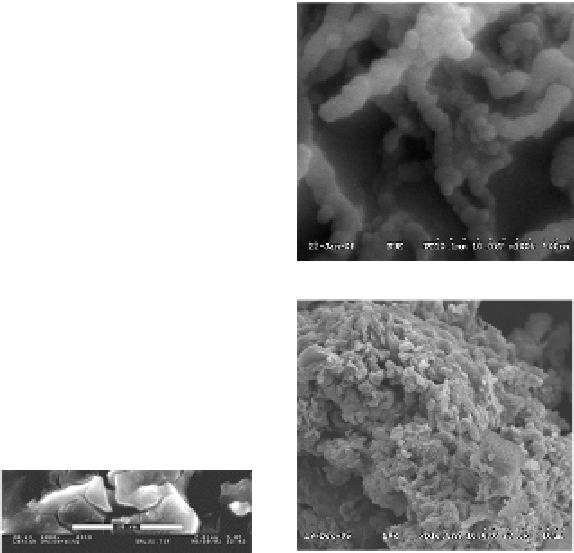Environmental Engineering Reference
In-Depth Information
Alowitz and Scherer, 2002), and perchlorate (Cao and Zhang, 2006) or to degrade
methyl-
tert
-butyl ether (MTBE) through a reductive activation of dioxygen process
(Lien and Wilkin 2002). They may also act as an adsorbent to immobilize heavy metals
through surface adsorption, precipitation or co-precipitation (e.g., Ponder et al., 2000;
Lien and Wilkin, 2005; Li and Zhang, 2007; Lien et al., 2007).
(b)
(b)
(a)
(a)
1 cm
1 cm
(d)
(d)
(c)
(c)
Figure 7.1
Different types of zero-valent metals: (a) iron filings (×1), (b) iron
nanoparticles (×100,000), (c) sulfated aluminum (×4,000), (d) bimetallic Fe/Al (×3,000).
Bimetallic particles are composed of two kinds of zero-valent metals. The
structure of bimetals usually includes cluster-in-cluster and core-shell structures for
nano-sized particles (Toshima and Yonezawa, 1998) while an island-like structure can be
observed in micro-sized bimetallic particles (Liou et al., 2005). An overall review of
bimetallic nanoparticles regarding their synthesis, characterization, and
chemical/physical applications has been reported (Toshima and Yonezawa, 1998). In this
chapter, the focus is on the application of bimetallic nanoparticles for environmental
remediation. Bimetallic nanoparticles have been the subject of research interest for their
potential to remediate a wide array of environmental contaminants in surface and ground




























































































Search WWH ::

Custom Search